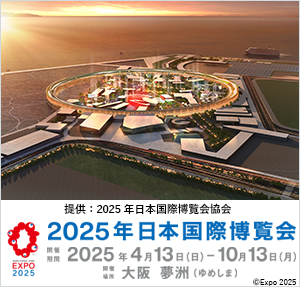How does the way our neighborhoods are designed affect cardiovascular health?
February 20, 2020
 Researchers from Waseda University, the University of Calgary, and Tohoku University aim to understand how urban design could influence cardiovascular health. (CREDIT: Waseda University)
Researchers from Waseda University, the University of Calgary, and Tohoku University aim to understand how urban design could influence cardiovascular health. (CREDIT: Waseda University)
A team of researchers from Waseda University, the University of Calgary, and Tohoku University has been working in collaboration on a series of studies in Japan and Canada that look at the relationship between urban design and cardiovascular health.
Cardiovascular disease is a leading cause of death worldwide. According to the Global Burden of Disease Study, approximately 17.8 million people die from the disease each year. Some of the well-established risk factors of cardiovascular disease are diet, smoking and exercise, but recently, there has been a growing scientific and political interest in understanding how our neighborhoods are designed could help prevent cardiovascular disease.
“We know there is a link between certain neighborhood characteristics, such as good access to green spaces, and cardiovascular health,” says Javad Koohsari, an assistant professor in urban design and health at Waseda’s Faculty of Sport Sciences. However, “how and why neighborhood characteristics influence cardiovascular health are not well-established. We are trying to identify the pathways through which the built environment affects cardiovascular health,” says Koohsari.
Koohsari has been working with Gavin McCormack, an associate professor in the Department of Community Health Sciences at the University of Calgary; Tomoki Nakaya, a professor at the Graduate School of Environmental Studies, Tohoku University; and Koichiro Oka, a professor at the Faculty of Sport Sciences at Waseda to investigate this link between neighborhood characteristics and cardiovascular disease. In their commentary paper published in Nature Reviews Cardiology on February 12, 2020, the team identified several key conceptual, methodological, and policy-relevant gaps in our current knowledge and proposed future directions to produce scientific evidence-based findings on the relationships between neighborhoods and cardiovascular disease.
“We have identified a total of eight issues which need to be addressed in order to produce robust evidence, one of them being the need to consider people’s daily mobility and activity spaces,” Oka explains. “People are exposed to different places at different times of the day, so we could use a global positioning system points and ecological momentary assessments to where and when or how often people are exposed to risk factors of cardiovascular disease.”
Koohsari says, “Though we must not let urban design and public health policy get ahead of ‘science,’ we hope that future studies will answer several of the key questions on how to design or redesign built environments to prevent cardiovascular diseases and promote healthier communities.”
Reference
Journal: Nature Reviews Cardiology
Title of original article: Neighbourhood built environment and cardiovascular disease: knowledge and future directions
Authors: Mohammad Javad Koohsari (Waseda University), Gavin R. McCormack (University of Calgary), Tomoki Nakaya (Tohoku University), Koichiro Oka (Waseda University)
DOI: 10.1038/s41569-020-0343-6
Link to article: https://www.nature.com/articles/s41569-020-0343-6?draft=collection
本プレスリリースは発表元が入力した原稿をそのまま掲載しております。また、プレスリリースへのお問い合わせは発表元に直接お願いいたします。
このプレスリリースには、報道機関向けの情報があります。
プレス会員登録を行うと、広報担当者の連絡先や、イベント・記者会見の情報など、報道機関だけに公開する情報が閲覧できるようになります。
このプレスリリースを配信した企業・団体

- 名称 早稲田大学
- 所在地 東京都
- 業種 大学
- URL https://www.waseda.jp/top/
過去に配信したプレスリリース
アルツハイマー病において成体神経新生が減少するメカニズムに新たな知見
12/12 10:00
3分30秒の軽運動で子どもの認知機能や気分が向上
12/11 14:00
生活習慣の組み合わせで児童の体力に違い
12/5 11:00
MRIと簡便な体幹筋機能のスクリーニングで“腰椎分離症”の特徴を解明
12/4 11:00
70~74歳の医療「2割負担」で医療費は減少、健康悪化は確認されず
12/2 10:00
女性アスリートの栄養戦略
11/25 13:00
数アト秒精度で2つのアト秒レーザーによる波動関数の干渉を測定
11/19 14:00
132億年前の銀河に超高温の星間塵
11/18 14:00













